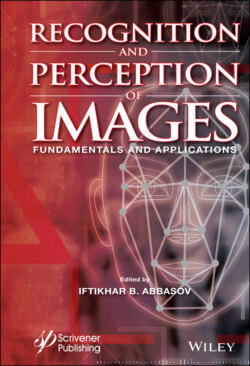Читать книгу Recognition and Perception of Images - Группа авторов - Страница 21
1.2.4 Effects of Masking and Aftereffects
ОглавлениеIf visual stimuli occur in close sequence from each other (in time or in space), they can overlap each other and mask the perception of each other. The cause of the masking effect is the inertia of vision due to the slowness of the neural response to the stimulation, as a result of which the response to the stimulus can be maintained even after its disappearance.
During saccades, the flow of visual information stops for a short time, but we do not notice this saccadic overshoot. If we look at ourselves in the mirror to detect these movements, we will not see any movements, overshoots, misting. But looking at other people performing the same actions, we will see how their eyes move. The cause of the saccadic “breakthrough” (empty field) are masking effects.
With long-term observation of the stimulus, not only the inertia of vision can manifest itself, but also adaptation or temporary “fatigue” of the stimulated portion of the retina will occur. These effects can be demonstrated by a slope aftereffect based on the experience of J. Gibson (Figure 1.2.13) [Shiffman, 2008], [Abbasov, 2019]. To do this, close the vertical grating (Figure 1.2.13, right), for 40-60 seconds, fix the view on the point between the inclined gratings (Figure 1.2.13, left). Then open the right side and quickly translate the view on the point between the two vertical bars (Figure 1.2.13, right). For some time you will find that the vertical lines are inclined in the direction opposite to the direction of inclination of the grating lines in Figure 1.2.13, on the left. The post-slope effect is manifested in the short-term distortion of the perception of the apparent orientation of the visual stimuli that arise due to adaptation to the previous stimulus, oriented differently.
You can also demonstrate the effect of curvature aftereffect. It manifests itself in a violation of the perception of the obvious form of the stimulus due to the prolonged effect of the previous stimulus of a different shape or curvature. This phenomenon is illustrated by the experience presented in Figure 1.2.14. Similarly, for 40-60 seconds, fix your gaze on the point between the two curves (Figure 1.2.14, on the left), then transfer the glance to the fixation point between the straight lines (Figure 1.2.14, on the right). Vertical lines will seem curved in the opposite direction to the curve of the curves.
Figure 1.2.13 Tilt action.
Figure 1.2.14 Curvature after-effect.
